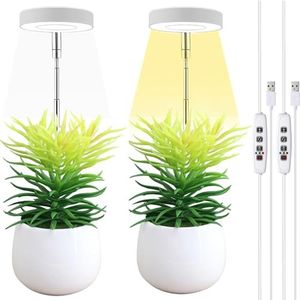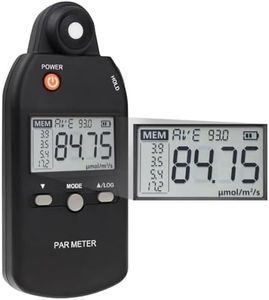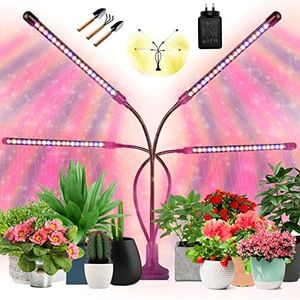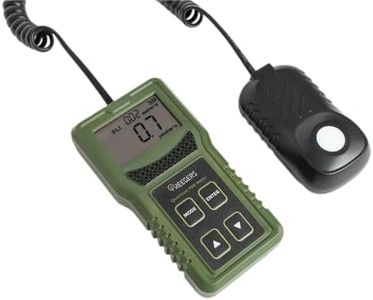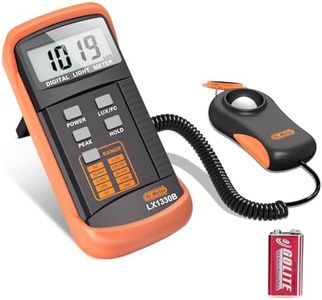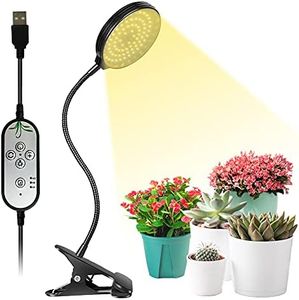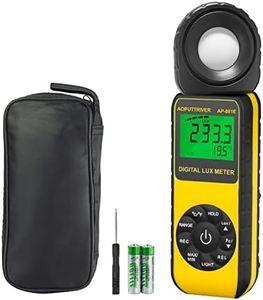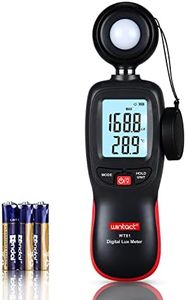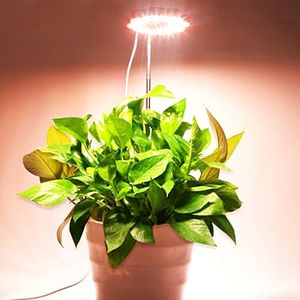We Use CookiesWe use cookies to enhance the security, performance,
functionality and for analytical and promotional activities. By continuing to browse this site you
are agreeing to our privacy policy
10 Best Plant Light Meters
From leading brands and best sellers available on the web.Buying Guide for the Best Plant Light Meters
Choosing the right plant light meter is essential if you want to monitor and optimize the light conditions for your indoor or outdoor plants. A plant light meter helps you understand if your plants are getting enough light for healthy growth, which can significantly impact their health and productivity. When picking a light meter, it's important to know what aspects of light are being measured, how accurate the device needs to be, and which features will actually help you care for your particular plants better.Type of Light MeasuredPlant light meters can measure different kinds of light, such as visible light (lux), specific light wavelengths (like PAR or Photosynthetically Active Radiation), or sometimes UV/infrared. Knowing what type of light your meter tracks is important because different plants need different parts of the light spectrum for growth. If you’re growing common houseplants or most vegetables, a meter that measures PAR is often most helpful, since it matches the light plants use for photosynthesis. For general use, meters that measure lux are easier and suitable for most foliage plants, while more advanced meters with PAR readings are better for serious gardeners or those with specialized plants.
Measurement RangeThe range refers to the lowest and highest levels of light the meter can detect. This is important because plants have varying needs—from low for shade-loving plants to very high for sun-loving ones. Low-range meters (up to a few thousand lux or PPFD µmol/m²/s) are best for indoor, shade, or low-light situations. High-range meters (tens of thousands of lux or higher) are more suitable for sunrooms, greenhouses, or outdoor use. Consider the lighting conditions of your plant space to choose a meter with a range that covers your needs, providing both low and high readings as necessary.
Accuracy and CalibrationAccuracy tells you how closely the meter’s readings match actual light levels. Cheap meters may not be accurate and could mislead you about your plants’ needs. Some meters can be calibrated, meaning you can adjust them for more precise readings. If you just need a rough idea of light levels, a basic meter may be enough, but if you care for sensitive or expensive plants or want to make detailed adjustments, look for a meter that’s well-reviewed for accuracy or one that allows calibration.
Ease of Use and DisplayA good light meter should be straightforward to use, with a clear display of readings. Some models offer features like backlit screens, data hold, or memory functions, making measurements easier to read and compare over time. If you want something very simple, basic meters with easy-to-read numbers are best, but if you’re tracking changes or managing many plants, extra features can save time and hassle. Take into account your comfort with gadgets to choose a meter you’ll actually use regularly.
Portability and DurabilityDepending on your gardening setup, you may want a small, portable meter for checking different locations or a sturdier unit for greenhouse or outdoor use. Portable meters are great for houseplants and checking various spots, whereas more rugged or waterproof options are better if you’ll be outdoors or in humid environments. Consider where and how often you’ll use the meter to make sure it suits your gardening style.
